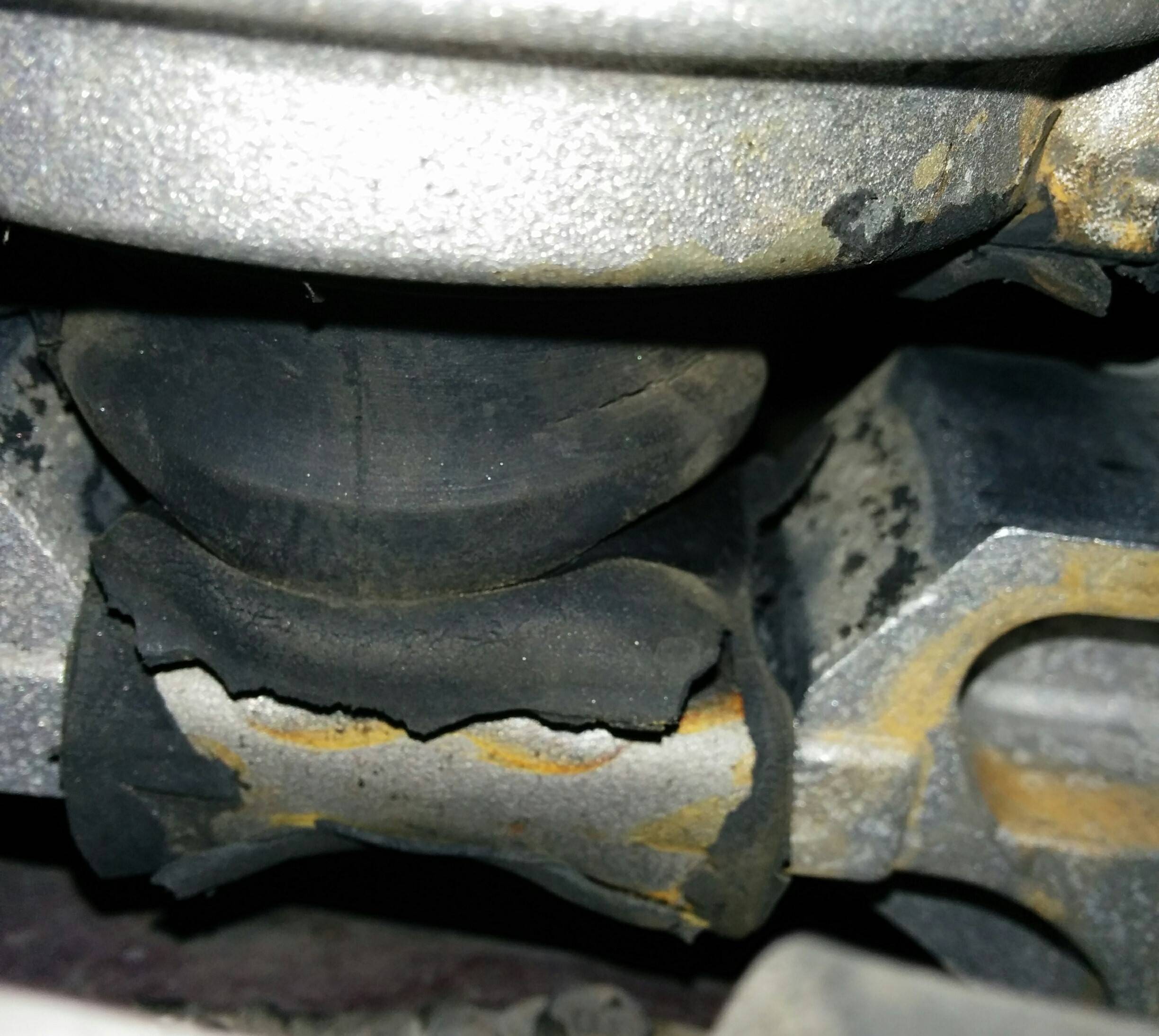I hear a metallic vibrating/grinding/chatter noise on the passenger side when I accelerate. I only hear it when the clutch is engaged and engine is under load. I hear it particularly strong when accelerating in a right turn but it practically goes away when I accelerate left.
I took it to two shops. The first thought it might be the transmission. The second suspected an intermediate shaft bearing or part of the belt system.
I did a little searching and learned that the right motor mount commonly fails and can cause a similar (same?) noise.
Based on the pictures, can you tell if this mount is defective or not?
Notes:
- Brown stuff - hydraulic fluid from the mount or just coolant spill?
- I easily pressed the center bulge all the way in. No resistance until it touched something hard in the middle.
- The forward and rear legs of the "floating" portion of the mount are actually resting on the metal below. Is this a giveaway - or normal?
Vehicle is 2006 Mazda 3 S 2.3L
Edit 1
It looks like you are all right. I jacked up the engine today and the rubber of the mount pulled right off the metal it was attached to. You can see a big crack in it too. To be sure the mount was in fact the cause of the noise, I stuffed some rubber from an old pair of shoes between the floating part of the mount and the mount frame. Noise gone! Time to order a new motor mount.
Edit 2
I bought a new mount off Amazon for $31 and had it installed. Purrs like a kitten now!


